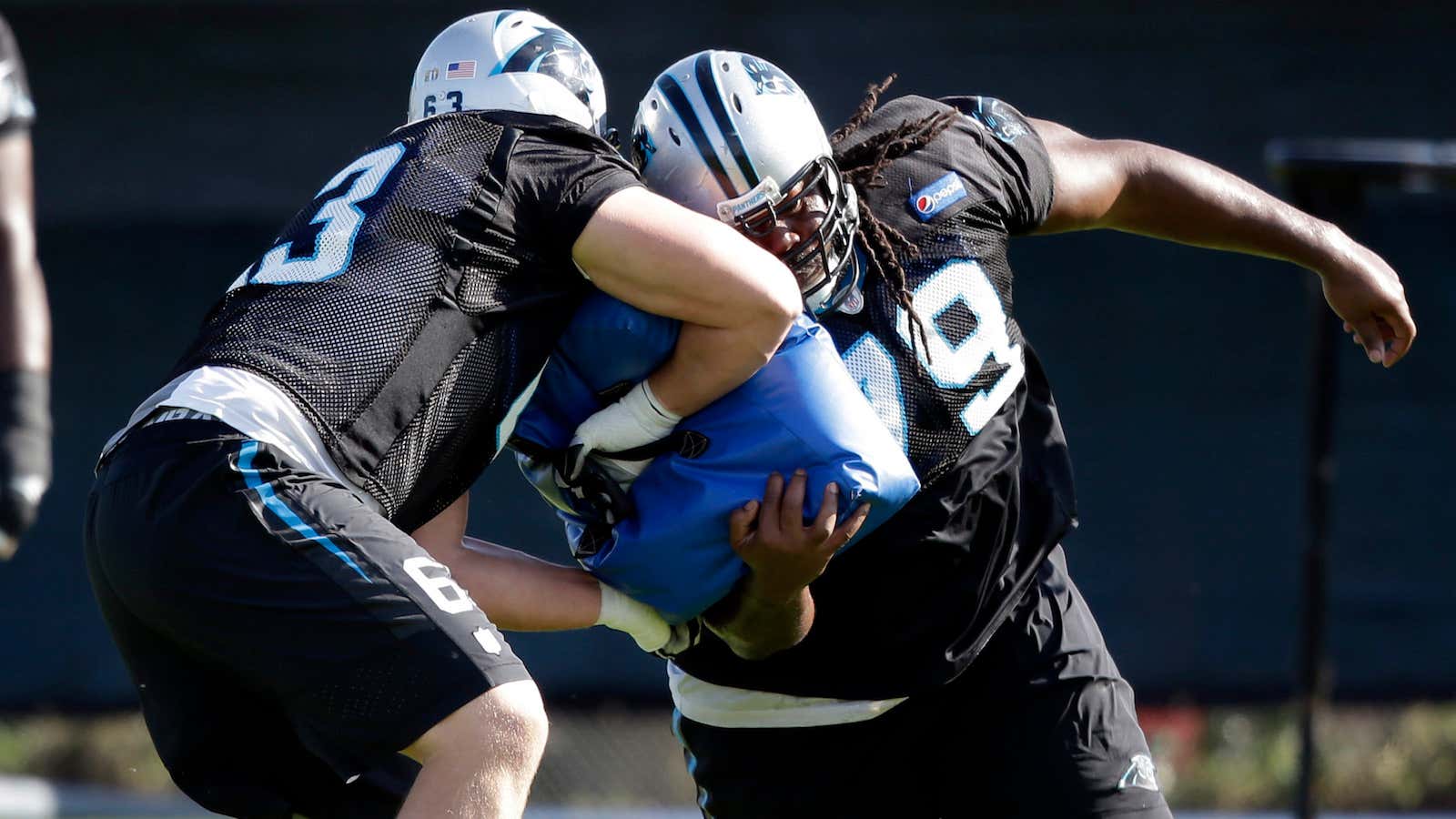The week before the Super Bowl each year, sales reps from around the country tout the latest and greatest improvements in football gear at the annual industry mecca known as Radio Row. From streamlined shoulder pads to concussion-proof helmets the display is meant to demonstrate the sport’s increased attention to player safety.
But behavioral science research suggests that these improvements may not be shielding football players from harm. Ironically, technological advances in padding, helmets, and other protective gear may have negligible—or even counterproductive—consequences for players on the field.
The problem comes down to a phenomenon known as risk homeostasis. First proposed by Gerald Wilde, a psychologist at Queen’s University in Canada, the basic idea is that our psychological tolerance for risk is malleable. We spend our days constantly computing the expected costs and benefits of various risky behaviors—from jaywalking to ordering that second martini. When our environments change, we change our calculations, too.
It’s true that some people are willing to take on more potential hazards than others. But whatever our tolerance for risk is, new developments that make a scenario seem safer can prompt us to act more boldly.
For example, in the mid 1990s, economists at Virginia Commonwealth University conducted an analysis of aggressive driving behavior using an insurance industry data set and state police accident reports. They found that insurance injury claims actually increased after drivers purchased cars with airbags. Accident reports told a similar story. People with airbag-equipped cars drove more aggressively than other drivers, largely neutralizing the intended safety benefits of this emerging technology.
This same principle applies to all kinds of behaviors. Develop a “cleaner” cigarette? It’s possible that smokers will light up even more often. Low-calorie cookies? Why, thanks—I’ll double my dessert portion. Any time the input factors around us change, informing us that a certain behavior may not be as harmful as we once thought it was, so too does our mental arithmetic.
Which brings us back to the Super Bowl and the counterintuitive notion that safer football equipment may not, in the end, lead to safer football. Enhanced protective gear may embolden players to assume additional risk. And so the scrambling quarterback wearing a supposedly concussion-proof helmet may avoid heading out of bounds, newly willing to absorb extra punishment for the chance to gain a few more yards. And the defensive back—knowing full well that his opponent is also armored by space-age technology—may opt for the big hit, leading with his head, in an effort to jar the ball loose.
Some have gone so far as to suggest that helmetless football might actually be a safer option, at least during training drills. The theory is that playing without helmets would help players learn proper tackling form and avoid assuming undue risks. It’s an interesting debate. But keep in mind: As we grow accustomed to new technologies over time, their effects on our behavior can also diminish. As football players get used to new equipment, they may adjust their behavior accordingly.
The clear lesson of risk homeostasis is that technology alone is not a magical cure-all for the traumatic brain injuries that plague football. Keeping players safe may also require us to reconsider the rules of the game and use proper coaching instruction to reinforce safer techniques. We can’t put all our faith in the promise of new and improved safety equipment, either. Frankly, that would be too dangerous.
